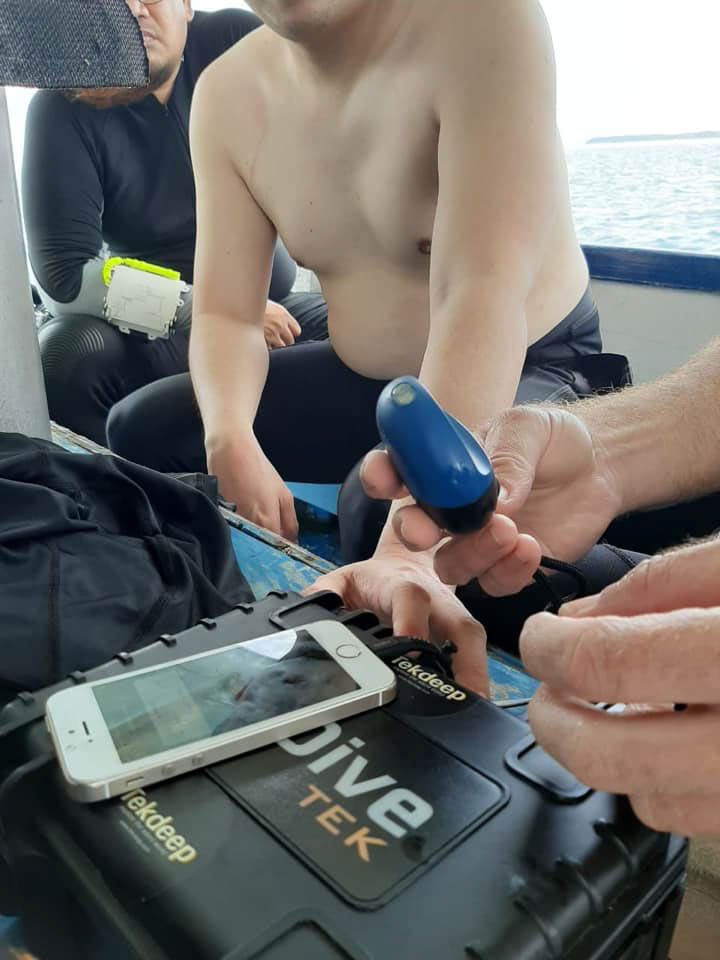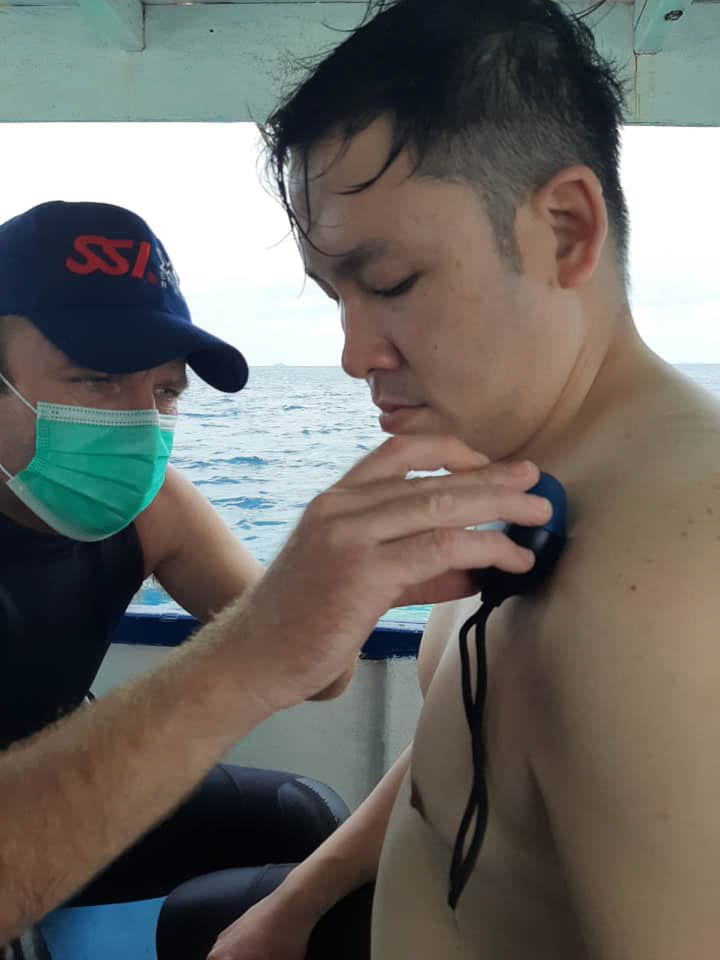Having been using the O’Dive by Azoth Systems doppler unit now for the past 6 months nearly continuously, primarily focusing on improving our research teams decompression strategies for dives in the 100m+.

This mini doppler device was utilised constantly in the field for a month long project where the members of the dive team were conducting research in depth ranges of 80-110m, and was supported by DAN Japan so as to gain better understanding of the decompression stress (or lack of) experienced by divers doing daily immersions to these depths. I can only say that even when we try to stay up to date and as current as possible with all things decompression strategy related, the O’Dive became an invaluable tool for redefining how we conducted up to 3hrs off decompression.
So what is the O’Dive sensor?
It is a mini doppler sensor that is easily deployed in the field and allows divers to measure themselves for possible post diving bubbles in the subclavian veins on the left and right shoulder. You will need an O’Dive sensor and the current O’Dive app downloaded on your smart phone. A total of minimum 4 readings (2 sets of left/right) are required to process an analysis and these readings should be taken after surfacing (15-30mins) and then 30mins after the first reading (the app will remind you when the second reading needs to be taken). You simply then synchronise the readings via internet connection to the main server at Azoth Systems which will analyse the information and send you a result within 10mins. You can then look at the results of the actual dive and simulate adjustments to your decompression parameters to see how you can possibly improve your decompression.
Having only really gained experience in using the O’Dive for deep trimix diving, it has been great to actively use this phenomenal piece of equipment in a more recreational setting while conducting MARES Horizon training in Jakarta, again with an eye on increasing safety as well as awareness and understanding of decompression theory.
If you are an active diver and especially a technical or rebreather diver you need to test out your deco protocols with an O’Dive, these sensors should be accessible through your instructor and or local dive facility. We are happy to be able to offer doppler readings for all students in training as well as divers conducting fun dives with us.
We are also currently offering O’Dive training and recognition via SSI and developing the TDI program standards.






